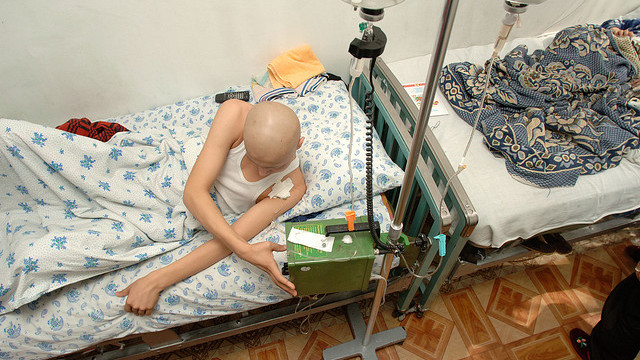
WASHINGTON (AP) – Could paying for bone marrow cells really boost the number of donors? The Obama administration is taking steps to block a federal court ruling that had opened a way to find out.
Buying or selling organs has long been illegal, punishable by five years in jail. The 1984 National Organ Transplantation Act that set the payment ban didn’t just refer to solid organs — it included bone marrow transplants, too.
Thousands of people with leukemia and other blood diseases are saved each year by bone marrow transplants. Thousands more, particularly minorities, still have trouble finding a genetically compatible match even though millions of volunteers have registered as potential donors under the current altruistic system.
A few years ago, the libertarian Institute for Justice sued the government to challenge that system. It argued that more people with rare marrow types might register to donate — and not back out later if they’re found to be a match — if they had a financial incentive such as a scholarship paid by a nonprofit group.
Ultimately, a panel of the 9th U.S. Circuit Court of Appeals ruled that some, not all, marrow donors could be compensated — citing a technological reason. Years ago, the only way to get marrow cells was to extract them from inside bone. Today, a majority of donors give marrow-producing cells through a blood-filtering process that’s similar to donating blood plasma. Because it’s legal to pay plasma donors, the December 2011 court ruling said marrow donors could be paid, too, as long as they give in that newer way.
“They’re not even transplanting your bone marrow. They’re transplanting these baby blood cells,” said Jeff Rowes, an attorney with the Institute for Justice. It represented some families who’d had trouble finding donors, and was pushing for a study of compensation as a next step.
Not so fast, says the Obama administration. The government now has proposed a regulation to keep the ban intact by rewriting some legal definitions to clarify that it covers marrow-producing stem cells no matter how they’re derived.
“It is not a matter of how you obtain it,” said Shelley Grant of the Health Resources and Services Administration’s transplant division. “Whether we obtain them through the marrow or the circulatory system, it is those stem cells that provide a potential cure.”
The proposal is open for public comment through Monday.
“Should we be paying for parts of people’s bodies which then can be used to help other people?” said Mary Ann Baily, a Hastings Center fellow who has long studied the question of transplant compensation. “We’ve been very reluctant to do that partly because it’s a very messy thing to do and to manage so that bad things don’t happen,” such as exploiting the poor.
Moreover, some patients fare better with marrow cells derived from bone, said Dr. Jeffrey Chell of Be the Match, the National Marrow Donor Program. The registry opposes financial incentives as “really another form of coercion,” he said, noting that international registries that share donor information with the U.S. also ban compensation.


